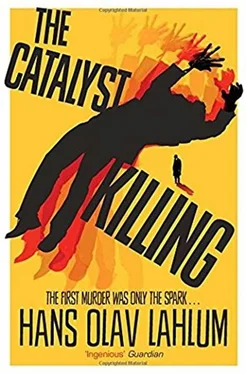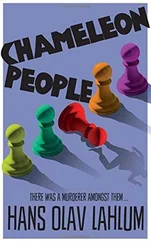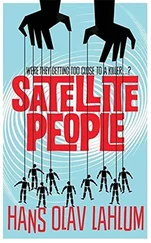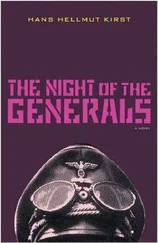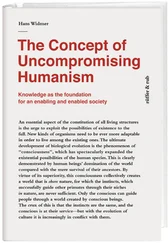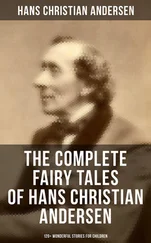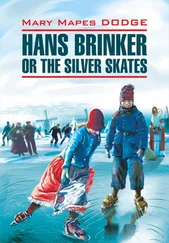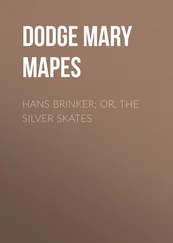I went back into the hotel by the main entrance and found the receptionist still standing, bewildered, in the middle of the room. She heaved a sigh of relief when she saw me and put a trembling arm round me. I was touched by her care in the midst of all the chaos. I took time to explain the situation and added that it would appear that the guest had not been armed, so there had been no immediate danger to her or myself. On hearing this, she calmed down impressively quickly and asked for permission to go back to the reception desk. There might be someone waiting there, and if not, she would try to contact the manager by phone. I thanked her for her help, asked her to send my greetings to the manager, and then turned my attention back to the hotel room.
Falko Reinhardt had either had very few belongings in the room, or had been very good at taking them with him. There was nothing to be found in the wardrobe or the two desk drawers. But under the pillow of his unmade bed, I found two things that immediately piqued my interest.
The first was a handwritten note with the following cryptic text:
1008: KK. Warn of attack and that SP is the murderer!
The tiny note gave me an enormous shock. I stood there looking at it for several minutes. I remembered what Miriam Filtvedt Bentsen had said about Falko’s to-do lists, and could confirm it to be true. He had written a to-do list in order to remember something important, and had forgotten where he had put it in the rush.
I could not get the initials SP to tally with any known suspect; but they could of course refer to someone unknown to me. And if not, it was alarmingly obvious to think of Miriam Filtvedt Bentsen herself, as the only person in the case who was a member of the SPP. It made me even more anxious to note that it did not say ‘the hitman’, simply ‘the murderer’. That meant that the person in question might also be a woman.
The other object that lay hidden under the pillow in Room 27 provided a degree of relief, but also a new mystery. It was a black and white photograph, dated ‘07.06.1970’, and there was no trace of Miriam Filtvedt Bentsen in the picture. It showed what was clearly a meeting, with four people round a table at one of Oslo’s finer restaurants. But only three faces were visible, and all three were known to me.
As soon as I saw the photograph, I felt a strange sympathy for a man I had never met or spoken to – and that was Henry Alfred Lien’s son in Trondheim. His father had obviously not only cooperated with the occupying forces during the war, but had also told me barefaced lies only two days ago about his contact with other Nazis after the war. In the photograph, Henry Alfred Lien was sitting squarely, with a wary smile on his face, between Frans Heidenberg and Christian Magnus Eggen.
Another person in a grey suit was sitting beside Eggen, to the far left of the photograph. Judging by appearances, the fourth person was also a man. But his bare hand, without any rings or markings of any sort, gave no indication as to his identity. His face was not in the picture. The corner had been torn off, so the fourth man remained faceless.
I stood and studied the picture for a few minutes.
Then I took both it and Falko’s forgotten to-do list, and wandered deep in thought back down the hotel corridor.
The receptionist stopped me to say that she had spoken to the hotel manager, who looked forward to hearing more details about the day’s drama and its significance for the country when he returned home. She then thanked me for the ‘day’s action film’ and added in a quiet voice that she would be delighted to talk more to me once the case was solved and closed.
The proposition was not at all unattractive. Her body was slim and her breasts looked firm in her uniform jacket, and her otherwise pretty face became mysteriously alluring when she now gave me a small, mischievous smile. But I had too much to think about and too many people to worry about to consider the possibility at any greater length. The receptionist vanished from my mind as soon as she vanished from my sight. On my way to the car, my thoughts ping-ponged between Miriam Filtvedt Bentsen and Patricia Louise I. E. Borchmann. And in the end, I drove back to the latter, with the to-do list and photograph on the seat beside me.
‘Hmmhh,’ was Patricia’s surprisingly protracted response. It was now half past nine on what had turned into a long and hectic Sunday.
Patricia had drunk two cups of coffee while she listened in tense silence to my report from the hotel. Then she drank another half cup while she studied the photograph and to-do list that I had found there.
The coffee in my own cup was still warm and sweet, but Patricia now seemed cold and bitter. For a moment, she reminded me of a grumpy Norwegian teacher when she looked at Falko’s list one last time, then let it fall to the table.
‘Well, any schoolchild could understand the first bit. 1008 is the tenth of August, which is tomorrow. And KK is Kolbjørn Kristiansen, which is you.’
I nodded in agreement and pretended to have understood this all along. Patricia looked at me, somewhat taken aback, but was quick to continue.
‘So, Falko was planning to contact you tomorrow. That much is clear, and good news. But the rest is not so clear or such good news.’
‘So you have no idea either who this SP might be – or what is being planned?’
Patricia gave an almost annoyed shake of the head.
‘There is not much to go on here. It seems most likely that SP is someone’s initials, in which case we don’t know whose. There are presumably thousands of people in Oslo alone whose initials are SP, so it is like looking for a needle in a haystack. It could be that SP is the fourth person in the picture, but then we still do not have much to go on. And there might not be any connection between the photograph and the note, even though it is natural to assume that there is. By the way…’
Patricia stopped speaking and stared intensely at the faceless fourth person in the photograph, as if she was trying to scare the truth out of it.
‘By the way…’ I prompted tentatively.
‘By the way, I was wondering who might have taken the photograph and who has torn off the corner. Was the photograph already like that when Falko got hold of it, or was it he who tore off the corner? And if so, why did he do it? You must ask him if and when you speak to him. But for goodness’ sake, start by asking about this attack that someone is planning against someone else, somewhere out in the real world.’
The latter was said with resignation in her voice. Patricia had ventured beyond the safety of her home’s four walls, out into the world for what proved to be the very dramatic conclusion of our first investigation. The case had been solved, but only after a terrifying moment which I could only assume had plagued her for many nights since. We never talked about it. It was simply understood that Patricia’s place was here indoors. She had withdrawn from what she herself on occasion called the real world.
I did not want to talk about it now either. And as she had not mentioned the possibility that SP could stand for Miriam Filtvedt Bentsen, as a member of the SPP, I for some unknown reason had no wish to point it out. So I thanked her for her help and stood up to leave.
Patricia raised her hand hastily and I immediately sat down again in the chair opposite her like an obedient child.
‘One more thing it might be worth thinking about… I am constantly struck by how different this case is from our last ones. But there are still human flies and satellite people involved. Magdalon Schelderup, who was the first to be murdered in the last case, was a rich and powerful old patriarch, who had a great many people spinning round him like satellites. Marie Morgenstierne, on the other hand, was a young woman without a family or social status. There was no one spinning around her, and she was not a star. But her murder may have been a catalyst killing, and in that case, it may have even more dramatic consequences for others than the murder of Magdalon Schelderup.’
Читать дальше
